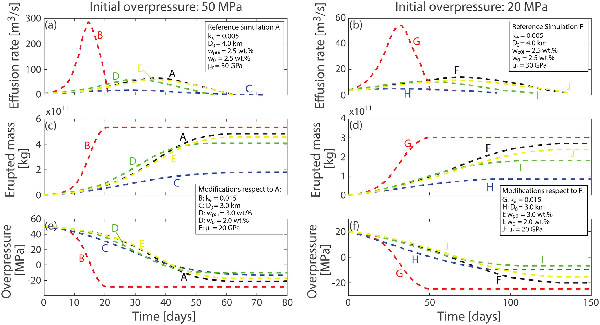Physical constraints for effective magma-water interaction along volcanic conduits during silicic explosive eruptions

Aravena A., M. de’ Michieli Vitturi, R. Cioni, A. Neri (2018).
Geology, 46/10, 867-870, https://doi.org/10.1130/G45065.1.
Abstract
The entry of groundwater into volcanic conduits has been proposed as a major modifying agent of eruptive dynamics, influencing magma fragmentation and pyroclast dispersion. Although several external water sources and interaction mechanisms have been proposed, the nature and effects of magma-water interaction are still largely unclear, as well as its controlling factors. A common postulate for phreatomagmatic activity to occur is that pressure in a conduit crosscutting a subsurface aquifer should drop below the aquifer pressure, which depends on the properties of the aquifer and the ascending magma. In agreement with most phreatomagmatic eruptions, we show that the injection of large mass fractions of groundwater during silicic explosive eruptions (e.g., >5 wt%) is only physically feasible for low-eruption-rate events; while high-intensity eruptions with evidence of magma-water interaction are probably related to other interaction mechanisms (e.g., the involvement of surface water or the destabilization of aquifer-hosting rocks during collapse phases). Because conditions for access of groundwater to the conduit are preferably reached above the fragmentation level, magma-water interaction seems not to induce dramatic changes to the features of a primary ‘dry’ vesiculation, as commonly claimed. Hence, the low vesicularity indexes often attributed to phreatomagmatic eruptions are difficult to explain by the quenching effect of groundwater on not-fully developed vesicularity. Instead, these indexes may be related to the low eruption rates needed for effective magma-water interaction, generally characterized by significant lateral gradients of vesicularity in narrow conduits.


Devi effettuare l'accesso per postare un commento.